We left our cozy Valparaiso hostel on January 29 and picked up our first rental car of the trip, excited and slightly apprehensive about the 3-4 hour drive southeast to Santa Cruz in the Colchagua Valley, Chile’s main (red) winemaking region. We had spent several hours in Valparaiso deciding on next steps, knowing only that we had to make it to Puerto Natales in the south by February 8 to meet friends. Given our love for wine, wineries, and sunny pretty places, I’m not sure why it was such a tough decision, but ultimately we decided to splurge a bit, rent a car and explore the area.
It was a definite break from our (only slightly upscale) backpacker budget and routine. The drive was fun– Brian handled the chaotic road out of downtown Valparaiso like a champ, I navegated in large part based on the sun (you don’t realize how much you rely on Google Maps until you’re without it…) and yet we made good time. We stayed at a gorgeous small hotel, complete with a pool, in a room with a private bathroom– a rarity in itself, and this one was the size of many of our previous bedrooms.
The approach to winery visits in this region is for the most part different from what we’re used to in Napa/Sonoma. There, you can generally drop in for a tasting. Here, most places require reservations and typically offer a tour in connection with the tasting, with more emphasis on the former. We were a bit apprehensive about this as 1) it’s considerably pricier; and 2) we’ve toured wineries in the past and no matter how different one may be from the other, tour overload causes our eyes to glaze over relatively quickly. Accordingly, we paced ourselves, touring one winery on each of the three days that we were there and squeezing in only one other tasting. The rest of the time we enjoyed slow mid-afternoon lunches, took full advantage of the pool at our posada, and finished off the evenings with wine and snacks on the patio.
We toured Viña Montes, Viña Viu Manent, and Viña MontGras, and had a tasting at Viña Estampa. We’d recommend all of them for different reasons. Montes had a beautiful facility (including a gorgeous vaulted barrel room with Gregorian chants playing 24/7, evidently to benefit the wines), and all of its grapes are hand-picked.
To compound the fanciness, we were lucky enough to arrive right after a group of commercial tasters, so we got a premium tasting by taking advantage of the open bottles. At Viu Manent, we took a horse-drawn carriage around the gorgeous grounds.
MontGras takes first prize even though we had an ordinary tasting, there were no horses, and some of the grapes are (gasp!) machine-picked. We had a wonderful guide, Cristian, and had the chance to go out into the vines and try various grapes, as well as a kumquat for good measure. We also got to drink a developing malbec straight from the vat.
The wines themselves were unsurprisingly delicious, although we aren’t especially picky (we’ve been happily drinking quite a bit of inexpensive Carmenere (Chile’s signature red) for the last four weeks). We expanded our palates a bit at the wineries, and learned that a very high percentage of Chilean wine is exported, particularly from the higher-end wineries. At the places we visited, between 85 and 96 percent of the wine made is sold outside of the country. We’ll definitely keep an eye out for these labels in the U.S. in the future.

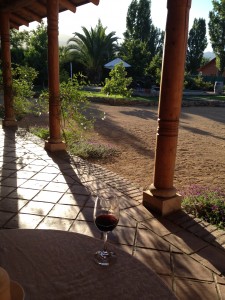
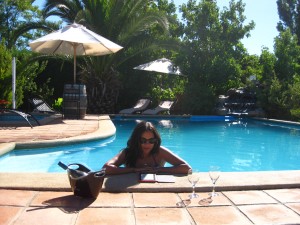
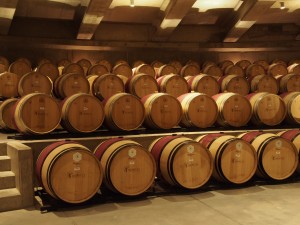
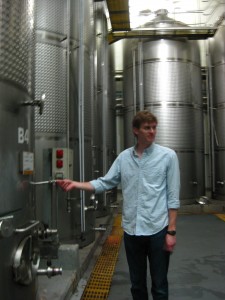
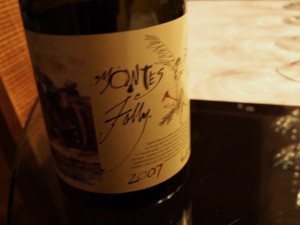
ah, Carmenere! I discovered Carmenere about 2 years ago, quite by arc ident. Now they. Are nearly my favorite wines. even replaced Zinfindel for that spot. I’ll be looking for those labels. Enjoy!
Chuck — that would be amazing if you found them! We really enjoyed the whole experience, and it’s great that you’re a Carmenere fan. We have since been to Uruguay (just a bit behind on the blogging) and really enjoyed the Tannat as well.